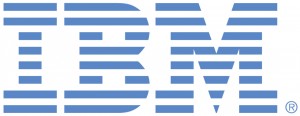If you ask any government worker— you probably wouldn’t be surprised that a lot of their time is spent doing paperwork and analyzing reports when they could be out in the field or better utilizing their time elsewhere. Fortunately, innovators are working to remedy this issue through innovative artificial intelligence models.
Cognitive computing is one of these models that allows the human thought processes to be simulated into a computerized model through self-learning systems that recognize patterns in data in the way that the human brain could.
In order to learn more about how cognitive computing can be used in creative ways, Daniel Stein, Co-Founder of Stewards of Change Institute; Martin Duggan, Director of Social Programs at IBM Watson Health; and Lana Rees, Director of the Office of Children and Youth in Erie County, Pennsylvania joined GovLoop for an online training, “The Value of Cognitive Computing: Improving the Child Welfare System.”
Reese explained that her department is focused on providing child protective services and responding to reports of child abuse or neglect that come into local offices. With each case, they take a report then investigate the situation, with the goal of rehabilitating the family and obtaining a good outcome.
Like many government programs, the child welfare system can greatly benefit from modernization efforts. “We largely rely on families self reporting and case workers’ reports to collect data for each case. However, we hardly ever look at this data from a broader perspective,” Reese said as she described how the Office of Children and Youth in Pennsylvania is using data.
The problem with aggregating the kind of data Rees described is that it is largely qualitative language and field notes that are difficult to analyze within an automated system. However, advances in artificial intelligence are making analysis of language possible. Duggan explained, “IBM Watson is working on cognitive technology that aims to allow technology to understand data and give caseworkers evidence based recommendations and to learn which of these recommendations are effective.” This in turn can help produce better outcomes more frequently.
Ultimately, the goal of utilizing cognitive computing in the child welfare system is to reinvent the role of social workers. Much of the paperwork and filing that social workers spend hours doing can easily be automated through cognitive technology. This will allow social workers to spend less time doing paperwork and more time in the field and with their families working towards good outcomes. “This empowers social workers to do their job in a more holistic way and eliminates avoidable errors,” Stein said.
While cognitive technology has the potential to improve child welfare process, it does not come without challenges. Stein explained that one of the biggest challenges is the regulatory hurdles imposed on these automating and connecting systems. Whether it is at the state, local or federal level, the child welfare system is highly regulated and particular rules must be followed when implementing new procedures. These regulations often slow down or completely stonewall the information collection and sharing processes that are necessary to optimize efficiency.
Additionally, organizations have been hesitant to embrace innovation and collaboration through cognitive computing. Rees articulated that the child welfare system has typically lagged behind other sectors when it comes to innovative partnerships, but they are working to collaborate with public health and educational partners to gather and analyze more information. According to Rees, in order to overcome this challenge, “we have to work collaboratively to serve the children and their families and ensure that our collaborations are able to gather information to best serve families across the system.”
Fortunately, funding is not a challenge that those adopting cognitive computing will face. Duggan explained, “IBM Watson’s technology is open publically for anyone to access and it is designed to be very affordable.” This allows government organizations to easily access and adopt cognitive technology despite limited budgets and regulatory restraints.
Looking forward, Stein suggested that adoption of cognitive computing is not a question of if but when and the workforce needs to be prepared to do this. As a result, educating staffs and making them more comfortable with technology will be necessary. Duggan aptly articulated, “cognitive computing can transform what people do by increasing good work and eliminating arduous work and employees should get excited to embrace it.”
For more information on how cognitive computing is helping to improve the child welfare system, check out the Stewards of Change Institute’s recent publication “Improving Processes and Practices in Child Welfare: Is Cognitive Computing Part of the Solution.”






Leave a Reply
You must be logged in to post a comment.